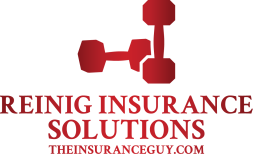As club owners, one of the most misinformed buying decisions we make involves the purchase of our business insurance coverage. It is difficult enough trying to determine the “type” of coverage we should have, but we are also faced with the question of how much protection we need.
From a property insurance perspective, you should always base your coverage limits on what it will cost to “replace” your lost property; not what your accountant says your property is “worth”. Your insurance agent has probably provided you with a policy that includes replacement cost wording that designed to do exactly that; replace your property in the event of a loss. However, if you have insured your property for its current “value”, you will likely be unable to replace new for old when you have a claim. Club owners who try to save a little money on their property insurance premiums by providing their agents with low replacement cost estimates are taking a substantial risk.
Most property insurance forms contain coinsurance wording that, in essence, requires the policy holder to insure up to 80, 90, or 100% of the true replacement value. Unfortunately, the only time this “coinsurance clause” is tested is at the time of a loss; by then it is too late. The monetary consequences can be devastating. For example, let’s say the true replacement value of your property is $1,000,000. With a 90% coinsurance clause, the insurance company will require that you insure your property for a minimum of $900,000 ($1,000,000 X .90 = $900,000). In this example, you decide to save some money on your property insurance, so you tell your agent that you want to insure your property for $450,000. As luck would have it, one of your pipes bursts in the middle of winter on a Sunday night and you don’t discover the damage until Monday morning. An adjuster comes out and determines that you have sustained $100,000 in damage. You breathe a sigh of relief because you know that you have $900,000 of protection. Now comes the ugly part. Due to the size of the potential claim, the insurance company hires a third party to come out and establish an estimate of your property replacement value. Low and behold, the estimator determines your replacement cost at $1,000,000. The company claims adjuster then informs you that, according to your coinsurance clause, you should have insured your property to at least 90% of the value or $900,000. You say, “So what, the claim is only $100,000”. The adjuster then explains that you did not meet the coinsurance requirement, and instead insured only half ($450,000) of the value you should have. The coinsurance calculation is then triggered and the claim is settled at the same percentage that you decided to insure for; half of its value. In other words, the company cuts you a check for $50,000 instead of $100,000. After a few carefully chosen remarks concerning the questionable parentage of the claims adjuster, you call your agent and discuss the origins of his parentage as well. The lesson here, of course, is to make sure you insure to the full replacement cost and you will never have to worry about having these unsavory discussions.
If you lease your space, you should also insure the replacement value of all of the tenant improvements, glass, and air conditioning units. Even though you may not have paid for the “improvements”, it is highly likely that your lease requires that you are responsible for all of the tenant improvements in the event of a loss.
If you own your building, you probably have a pretty good idea of what it would take to rebuild from the ground up in the event of a total loss. Even though the likelihood of experiencing a total loss is remote, your “coinsurance clause” requires that you insure to your full replacement value.
Now that you and your agent have decided on adequate property values, you now have to decide how to protect your loss of income if you are forced to close your gym due to a covered claim. It still amazes me that many club owners pass on this coverage all together. Keep in mind, that it is not the fire that will put you out of business; it is the lost “revenue” you sustain while the club is being re-built. I recommend that you try and protect a minimum of 4 months of your gross annual income but, admittedly, is difficult deciding the proper coverage amount. For larger clubs, protecting 100% of the annual income may not be enough. Also keep in mind that even after you re-open your club, it may takes months before you build up the revenue numbers you had just prior to the loss. Choosing the correct amount of business income protection will vary based on the individual owner’s comfort level.
We will cover the question of “How much liability insurance coverage do you need?” in next months edition. In the meantime, if you have any questions or if you would like to receive a free copy of our “Insurance Terms”, please email me at kreinig@frii.com.
Ken Reinig is President of Association Insurance Group and Owner of the Women’s Workout Company in Lakewood, Colorado.

